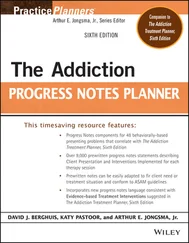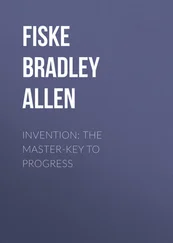25 Assign Forgiveness Letter (25)The client was assigned to write a letter of forgiveness to the perpetrator of the childhood hurt.The client was assigned “Feelings and Forgiveness Letter” from the Adult Psychotherapy Homework Planner (Jongsma).The client has followed through with writing his/her/their forgiveness letter to the perpetrator of the childhood hurt; as this letter was processed, he/she/they reported experiencing a sense of putting the issue in the past.The client reported that he/she/they have begun the process of forgiving the perpetrator of his/her/their childhood pain and others who may have been passive collaborators; the benefits of this progress were highlighted.The client has not followed through on writing the forgiveness letter to the perpetrator of his/her/their childhood pain and was redirected to do so.
26 Teach Forgiveness Benefits (26)The client was taught the benefits of beginning the process of forgiving those adults who perpetrated abuse and neglect on him/her/them during childhood.The client was supported as he/she/they have begun the process of forgiving the perpetrators of his/her/their childhood abuse and neglect.As the client has begun to forgive the perpetrators of his/her/their painful childhood experiences, it was noted that he/she/they have also begun to release feelings of hurt and anger and put the issue in the past.It was reflected that as the client has begun forgiveness, he/she/they have been able to experience feelings of trust in others.
27 Recommend Forgiveness Books (27)Reading books on forgiveness was recommended to the client to increase his/her/their understanding of the process and benefits of forgiveness.The client was advised to read Forgive and Forget (Smedes) or When Bad Things Happen to Good People (Kushner).The client has followed through with reading the recommended material on forgive- ness and key concepts were reviewed and processed.Since the client has read the forgiveness material, he/she/they have been able to identify the positive aspects for oneself of being able to forgive all those involved with the abuse; this insight was processed.The client has not followed through on reading the recommended material on forgiveness and was redirected to do so.
28 Explore Victim Versus Survivor (28)The client was asked to consider the positive and negative consequences of considering oneself as a victim versus being a survivor of childhood trauma.The client's understanding of the advantages of perceiving oneself as a survivor of abuse and neglect rather than a victim was processed.The client has continued to view self as a victim of painful childhood experiences and has not moved forward toward feeling empowered as a survivor; this stagnation was reflected to him/her/them.
29 Reinforce Survivor Self-Perception (29)The client was encouraged and reinforced to perceive self as a survivor rather than a victim of childhood abuse or neglect.The client was assigned “Changing from Victim to Survivor” from the Adult Psychotherapy Homework Planner (Jongsma).As the client increased his/her/their statements that reflected a self-perception of survivorship rather than victimization, strong reinforcement was given.The client has continued to make statements of being a victim rather than statements of personal empowerment that reflect survivorship; he/she/they were helped to reframe these statements into survivor statements.
30 Teach Share-Check Technique (30)The client was taught to build trust in relationships through the use of the share-check technique.The client reported that he/she/they have begun to share personal thoughts and feelings with others on a minimal basis in order to see if those feelings are dealt with respectfully and supportively; the results of this sharing were reviewed.The client expressed difficulty with building trust and intimacy with others; he/she/they were reminded to do this in small steps.The client was reinforced as he/she/they expressed insight into his/her/their difficulty with building trust as related to childhood experiences of abuse and neglect.
31 Teach Trust in Others (31)The client was encouraged and taught the advantages of treating others as trustworthy while continuing to assess their character.Positive feedback was provided as the client reported that he/she/they are beginning to increase trust and interaction with others.The client continues to struggle with issues of trust and to be withdrawn in social relationships; he/she/they were reminded to increase trust in small steps.
1 1The numbers in parentheses correlate to the number of the Behavioral Definition statement in the companion chapter with the same title in The Complete Adult Psychotherapy Treatment Planner, Sixth Edition, by Jongsma, Peterson, and Bruce (Hoboken, NJ: Wiley, 2020).
2 2The numbers in parentheses correlate to the number of the Therapeutic Intervention statement in the companion chapter with the same title in The Complete Adult Psychotherapy Treatment Planner, Sixth Edition, by Jongsma, Peterson, and Bruce (Hoboken, NJ: Wiley, 2020).
Конец ознакомительного фрагмента.
Текст предоставлен ООО «ЛитРес».
Прочитайте эту книгу целиком, купив полную легальную версию на ЛитРес.
Безопасно оплатить книгу можно банковской картой Visa, MasterCard, Maestro, со счета мобильного телефона, с платежного терминала, в салоне МТС или Связной, через PayPal, WebMoney, Яндекс.Деньги, QIWI Кошелек, бонусными картами или другим удобным Вам способом.












